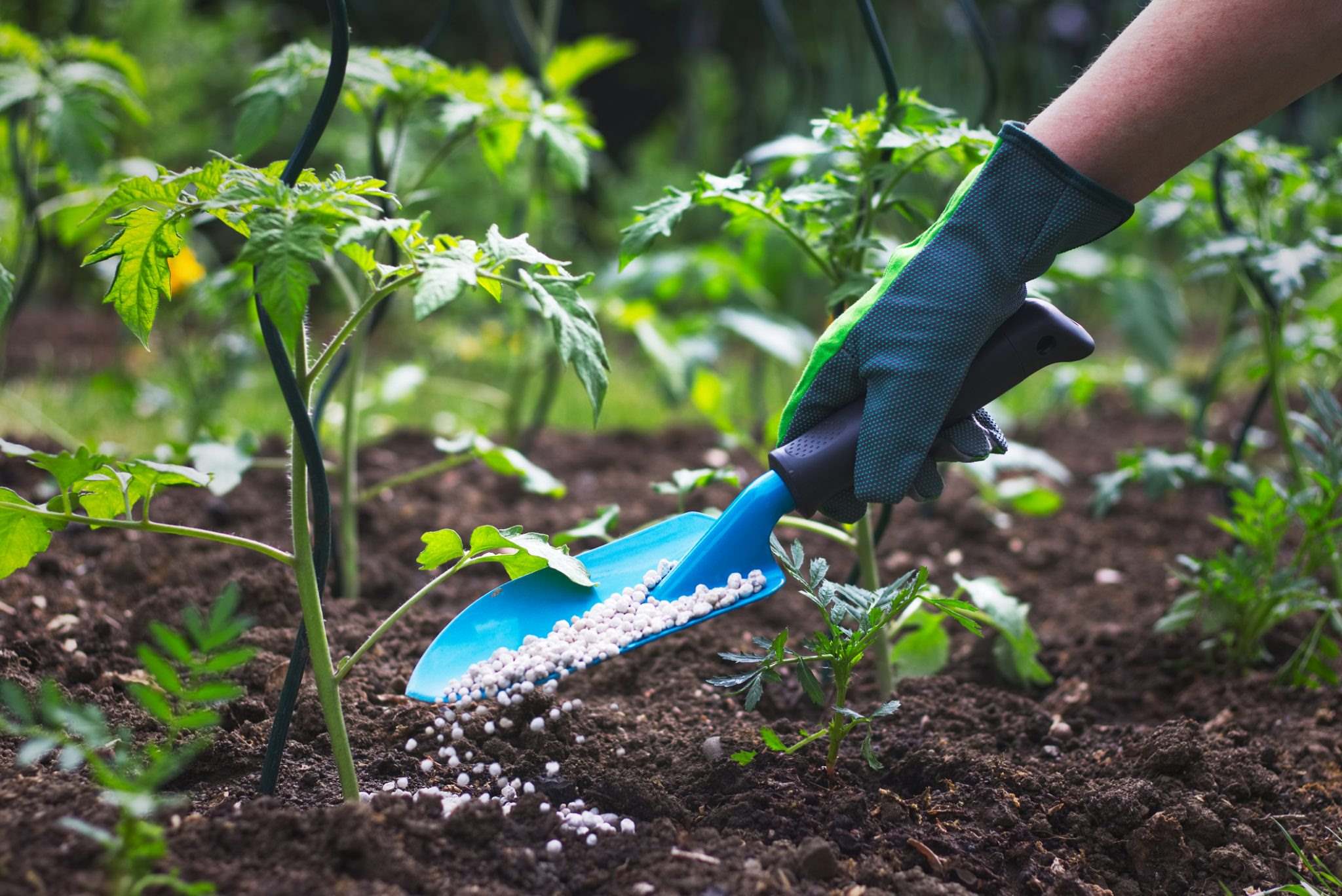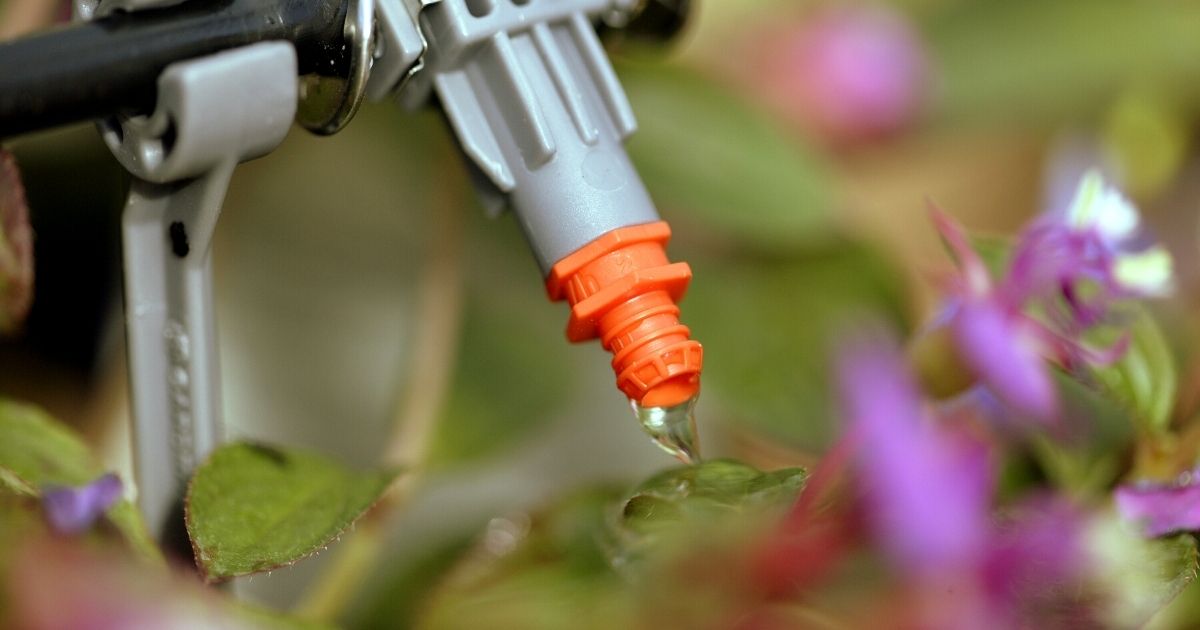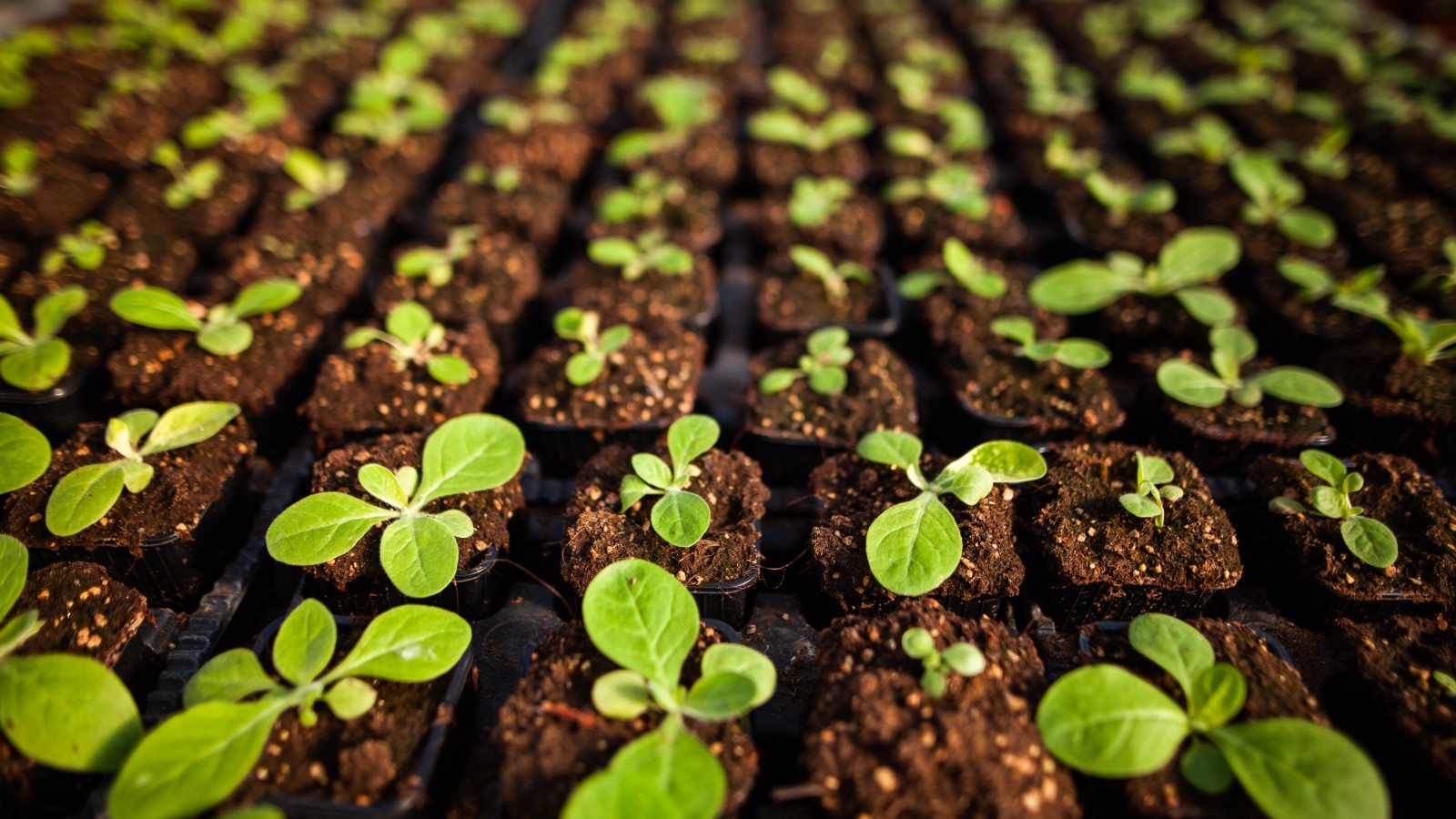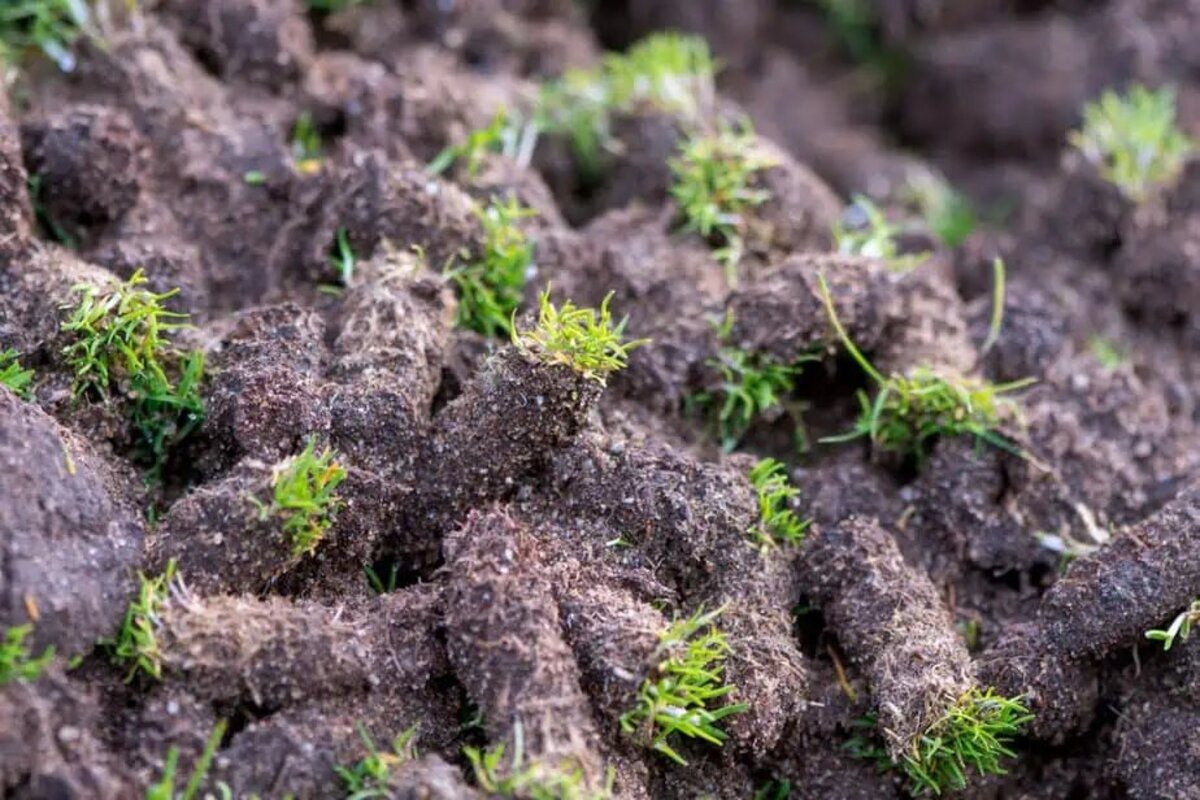Home>Gardening Techniques>Plant Care>How To Add Fertilizer To Soil After Planting
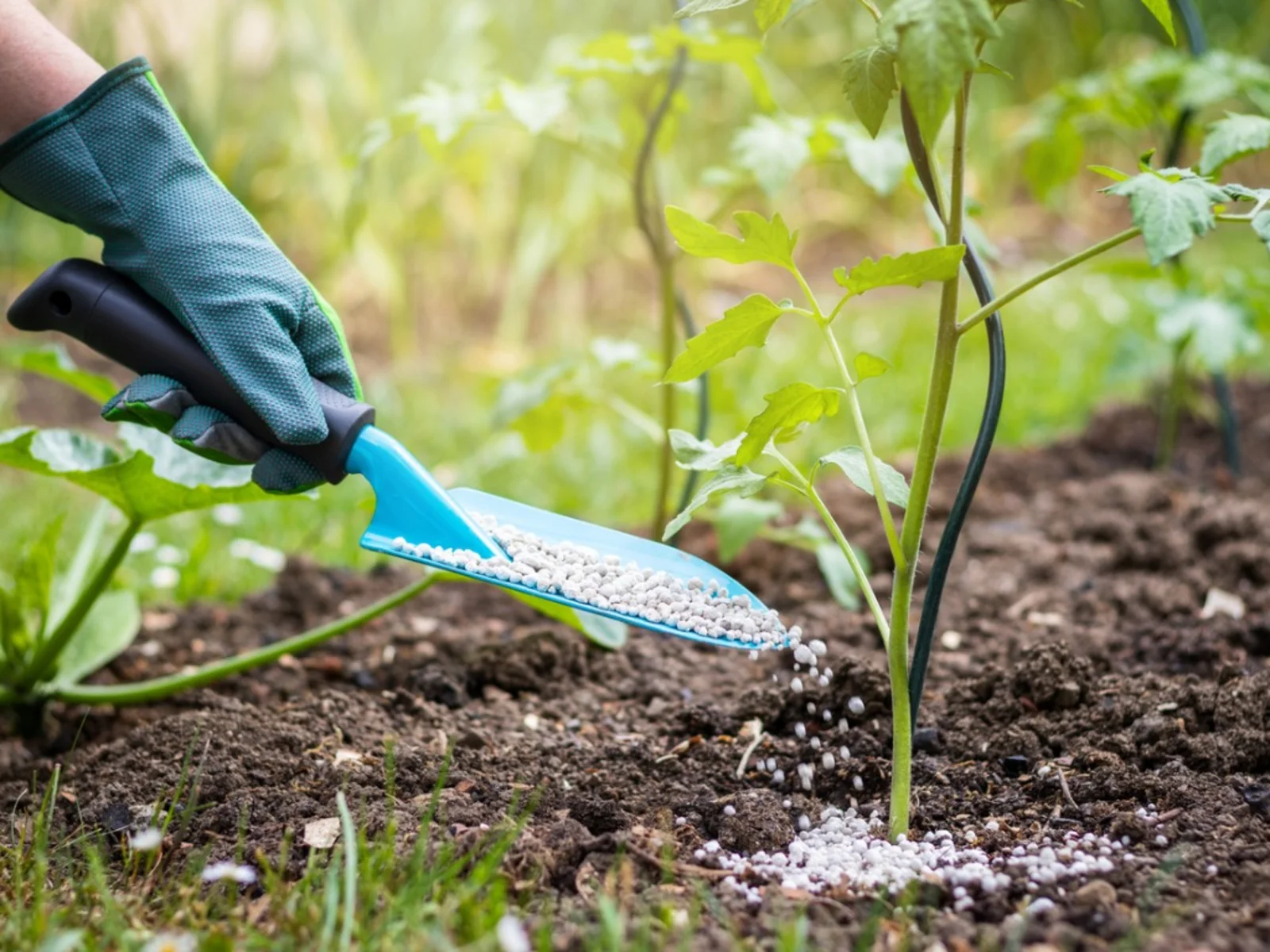

Plant Care
How To Add Fertilizer To Soil After Planting
Published: August 26, 2023
Learn how to properly nourish your plants with fertilizer after planting. Improve plant care and maximize growth with our easy-to-follow tips.
(Many of the links in this article redirect to a specific reviewed product. Your purchase of these products through affiliate links helps to generate commission for Chicagolandgardening.com, at no extra cost. Learn more)
Table of Contents
- Introduction
- Understanding the Importance of Adding Fertilizer to Soil after Planting
- Assessing the Nutritional Needs of Your Plants
- Choosing the Right Type of Fertilizer
- When and How Much Fertilizer to Apply
- Preparing the Soil for Fertilizer Application
- Methods for Adding Fertilizer to Soil After Planting
- Incorporating Fertilizer into the Soil
- Top-Dressing with Fertilizer
- Using Liquid Fertilizers for Quick Nutrient Boosts
- Monitoring and Adjusting Fertilizer Application
- Conclusion
Introduction
Welcome to the world of plant care! Whether you are an experienced gardener or just starting out, understanding how to properly care for your plants is crucial for their overall health and growth. One essential aspect of plant care is fertilizing the soil after planting.
Adding fertilizer to the soil provides your plants with the necessary nutrients they need to thrive. It replenishes essential elements that may be lacking in the soil, promoting root development, foliage growth, and better overall plant performance.
In this article, we will explore the importance of adding fertilizer to soil after planting, how to assess your plants’ nutritional needs, choose the right type of fertilizer, determine when and how much to apply, and various methods for incorporating fertilizer into the soil.
By following these guidelines, you can ensure a healthy and vibrant garden that will flourish throughout the growing season. So let’s dive in and discover the secrets to successful fertilizer application!
Understanding the Importance of Adding Fertilizer to Soil after Planting
Adding fertilizer to the soil after planting is a crucial step in providing your plants with the essential nutrients they need to thrive. While healthy soil will naturally contain some nutrients, it may not always have an optimal balance for your specific plants. Here are some reasons why adding fertilizer after planting is important:
1. Nutrient replenishment: Plants extract nutrients from the soil as they grow, and over time, these nutrients can become depleted. By adding fertilizer, you replenish the essential elements that may be lacking, ensuring your plants have a steady supply to support their growth.
2. Root development: Fertilizer contains nutrients like nitrogen, phosphorus, and potassium (NPK), which are essential for robust root development. Strong roots not only anchor the plant in the soil but also enhance its ability to absorb water and nutrients, leading to healthier and more productive plants.
3. Foliage growth: Fertilizer provides the necessary nutrients for lush foliage growth. Nitrogen, in particular, promotes leaf development and helps plants achieve their full potential in terms of size and color. Adequate foliage growth is essential for the plant’s ability to perform photosynthesis and produce energy.
4. Flower and fruit production: Fertilizer plays a vital role in the development of flowers and fruits. Phosphorus, in particular, stimulates flower formation and helps with seed production. Potassium, on the other hand, supports fruit development by regulating water uptake and improving overall fruit quality.
5. Overall plant health: Proper nutrition is key to maintaining the overall health and vigor of your plants. When plants are well-nourished, they are better equipped to withstand environmental stresses such as temperature fluctuations, pest attacks, and diseases. Fertilizer helps fortify their immune system, helping them thrive even in challenging conditions.
By understanding the importance of adding fertilizer to soil after planting, you can ensure that your plants receive the necessary nutrients to grow and flourish. The next step is to assess the nutritional needs of your plants, which we will explore in the next section.
Assessing the Nutritional Needs of Your Plants
Every plant has unique nutritional requirements, and understanding their needs is crucial for effective fertilizer application. Assessing the nutritional needs of your plants allows you to provide adequate nutrients without overdoing it. Here are some ways to determine the nutritional needs of your plants:
1. Soil testing: Conducting a soil test is the most accurate way to determine the nutrient levels in your soil. It reveals the pH level, nutrient deficiencies, and excessive nutrient levels. Soil testing kits are available at garden centers or through your local agricultural extension office.
2. Plant symptoms: Observing your plants for any nutrient deficiency symptoms can provide clues about their nutritional needs. For example, yellowing leaves may indicate a lack of nitrogen, while stunted growth may suggest a deficiency in phosphorus. Use a comprehensive guide or consult with a professional to identify the specific symptoms and corresponding nutrient deficiencies.
3. Plant type and growth stage: Different plants have varying nutrient requirements. Leafy greens, for instance, typically require higher nitrogen levels, while fruiting plants may need more phosphorus and potassium. Additionally, the growth stage of the plant influences its nutrient needs. For example, during the flowering and fruiting stage, plants often require more phosphorus to support these processes.
4. Climate and soil conditions: The climate and soil conditions in your area can also impact the nutrient availability and requirements. Certain nutrients may leach more quickly from sandy soils, while clay soils may retain nutrients but have poor drainage. Understanding your local climate and soil characteristics can help you tailor your fertilizer application accordingly.
5. Plant-specific guidelines: Some plants have specific nutritional needs documented by experts and horticultural organizations. Consult plant-specific guides, online resources, or reputable gardening books to determine the specific nutrient requirements for your plants.
By assessing the nutritional needs of your plants, you can provide precise and targeted fertilizer application. This ensures that your plants receive the necessary nutrients for healthy growth without excess that can lead to environmental issues. Next, let’s explore the process of selecting the right type of fertilizer.
Choosing the Right Type of Fertilizer
Choosing the right type of fertilizer is crucial to ensure your plants receive the specific nutrients they need for optimal growth. With a wide variety of fertilizers available in the market, it can be overwhelming to determine which one is most suitable for your plants. Here are some factors to consider when selecting the right type of fertilizer:
1. Macronutrient composition: Fertilizers are classified based on their macronutrient composition, which includes nitrogen (N), phosphorus (P), and potassium (K). These three nutrients are vital for plant growth, and different plants have varying requirements. Consider the nutrient needs of your plants and choose a fertilizer with the appropriate NPK ratio that matches those needs.
2. Soil test results: Refer to the results of your soil test to identify any nutrient deficiencies. Some fertilizers are formulated specifically to address certain deficiencies, such as high-phosphorus fertilizers for soils lacking in phosphorus. By addressing the deficiencies, you can effectively improve soil fertility and promote healthy plant growth.
3. Organic vs. synthetic: Fertilizers can be classified as organic or synthetic. Organic fertilizers are derived from natural sources such as compost, manure, or bone meal, and they release nutrients slowly over time. Synthetic fertilizers, on the other hand, are chemically formulated and provide nutrients in a more concentrated form. Consider your gardening preferences, environmental concerns, and specific plant requirements when deciding between organic and synthetic fertilizers.
4. Controlled release vs. water-soluble: Controlled-release fertilizers slowly release nutrients over an extended period, providing a steady supply to your plants. They are beneficial for plants that have long growing seasons or require a consistent nutrient supply. Water-soluble fertilizers, on the other hand, dissolve quickly in water and provide an immediate nutrient boost. They are convenient for quick nutrient absorption or when used as a foliar spray.
5. Micro-nutrient content: In addition to macronutrients, plants also require trace elements known as micronutrients for proper growth. Some fertilizers contain a mix of these essential micronutrients, which can benefit plants that have specific micronutrient deficiencies. Check the fertilizer label to ensure it provides a well-balanced range of micronutrients.
Consider the unique needs of your plants, taking into account their nutritional requirements, the soil conditions, and your gardening preferences when selecting the right type of fertilizer. By choosing wisely, you can provide your plants with the essential nutrients they need to thrive and flourish. Next, let’s explore the best practices for when and how much fertilizer to apply.
When and How Much Fertilizer to Apply
Knowing when and how much fertilizer to apply is crucial to ensure your plants receive the right amount of nutrients without overfeeding them. Proper timing and dosage are key to promoting healthy growth and preventing nutrient imbalances. Here are some guidelines to help you determine when and how much fertilizer to apply:
1. Follow the plant’s growth stage: Plants have different nutritional needs at various stages of growth. During the active growing season, such as spring and summer, plants may require more frequent fertilizer applications. On the other hand, during dormant periods or winter, it’s best to reduce or suspend fertilizer application as plants are not actively growing.
2. Apply fertilizer before planting: Incorporating a slow-release fertilizer into the soil before planting provides a consistent nutrient supply throughout the growing season. This ensures that plants receive the necessary nutrients right from the start and minimizes the need for regular applications later on.
3. Divide fertilizer applications: Instead of applying all the fertilizer at once, divide the dosage into multiple applications. This helps avoid nutrient overload and minimizes the risk of leaching. Apply smaller amounts every few weeks to allow plants to absorb the nutrients gradually.
4. Consider the plant’s response: Observe how your plants respond to fertilizer applications. If they show signs of excessive growth or leaf burn, you may be applying too much fertilizer. Adjust the dosage accordingly and monitor the plants’ response to ensure they receive the right amount of nutrients.
5. Measure carefully: Use measuring tools such as a scoop or a measuring cup to ensure accurate dosage. Different fertilizers have specific application rates, so always consult the product label for the recommended amounts. Avoid guessing or overestimating the dosage, as it can lead to nutrient imbalances or harm the plants.
6. Apply during favorable weather conditions: Apply fertilizer when the weather is mild and there is no risk of heavy rainfall. This allows the nutrients to be easily absorbed by the plants and reduces the chances of nutrient runoff or leaching.
By considering the growth stage of your plants, dividing fertilizer applications, observing plant responses, measuring carefully, and applying during favorable weather conditions, you can ensure that your plants receive the right amount of fertilizer at the right time. This promotes healthy growth and minimizes the risk of nutrient-related problems. Next, let’s explore some methods for adding fertilizer to soil after planting.
Preparing the Soil for Fertilizer Application
Before adding fertilizer to your soil, it’s essential to prepare the soil properly to ensure optimal nutrient uptake by your plants. Proper soil preparation creates a favorable environment for the fertilizer to work effectively. Here are some steps you can take to prepare the soil for fertilizer application:
1. Clear the area: Start by removing any weeds, rocks, or debris from the planting area. Weeds compete with your plants for nutrients, so removing them ensures that your plants have access to the fertilizer and its nutrients.
2. Loosen the soil: Use a garden fork or a tiller to loosen the soil and break up any compacted areas. This improves soil aeration and drainage, allowing the fertilizer to penetrate the soil more effectively and reach the plant roots.
3. Remove any residue: If you have previously applied any organic matter, such as compost or mulch, make sure to remove any remaining residue from the planting area. This prevents nutrient imbalances and ensures accurate fertilizer application.
4. Incorporate organic matter: Adding organic matter, such as compost or well-rotted manure, can enrich the soil and provide additional nutrients. Mix the organic matter into the soil thoroughly, ensuring even distribution, before adding the fertilizer.
5. Consider soil amendments: Depending on the results of your soil test, you may need to incorporate specific soil amendments to correct any nutrient deficiencies or imbalances. This could include adding lime to adjust the pH level or adding sulfur to reduce alkalinity.
6. Water the soil: Before applying the fertilizer, water the soil lightly to ensure it is moist, but not waterlogged. This creates a conducive environment for the fertilizer to dissolve and penetrate the soil, making it more accessible to plant roots.
By properly preparing the soil before fertilizer application, you create an optimal growing environment for your plants. This allows the fertilizer to work effectively and ensures that the nutrients are readily available for your plants to uptake. Once the soil is prepared, you can proceed with the desired method of adding fertilizer to the soil.
Methods for Adding Fertilizer to Soil After Planting
There are several effective methods for adding fertilizer to the soil after planting. The method you choose will depend on your preference, the type of fertilizer you are using, and the specific needs of your plants. Here are some common methods for adding fertilizer to soil after planting:
1. Broadcasting: Broadcasting is a method where you evenly spread the fertilizer over the soil surface. This method works well when using granular or dry fertilizers. Use a garden spreader or your hands to distribute the fertilizer evenly, taking care to avoid direct contact with plant stems or foliage. After broadcasting, lightly rake the fertilizer into the top layer of soil to incorporate it.
2. Top-Dressing: Top-dressing involves applying fertilizer on the surface around the base of established plants. This method is commonly used for spreading slow-release or organic fertilizers. Sprinkle the fertilizer around the plants, keeping it 4 to 6 inches away from the stems. Avoid piling the fertilizer directly on the plants to prevent burning or excessive nutrient concentration in one area.
3. Side-Dressing: Side-dressing involves creating a shallow trench or furrow next to the plants and applying the fertilizer into the trench. This method is useful for providing an extra nutrient boost during the growing season. Applying the fertilizer directly to the soil near the root zone allows the nutrients to be absorbed efficiently. After applying the fertilizer, gently cover it with soil and water thoroughly.
4. Foliar Spray: Foliar feeding involves applying a liquid fertilizer directly to the leaves of the plants. This method provides a quick nutrient boost and can be effective in correcting specific nutrient deficiencies. Dilute the liquid fertilizer according to the manufacturer’s instructions and spray it onto the leaves, ensuring complete coverage. Apply the foliar spray during the early morning or late afternoon to avoid leaf burn from the heat of the day.
5. Drip Irrigation or Fertigation: Drip irrigation systems can be used to deliver liquid fertilizer directly to the plant roots. This method is often used in large-scale agricultural operations but can also be applied to home gardens. Fertigation allows for precise nutrient delivery and can be automated for consistent application throughout the growing season.
Choose the method that best suits your plants and gardening practices. Consider the fertilizer type, plant preferences, and your own convenience when deciding how to add fertilizer to the soil after planting. The important thing is to ensure that the fertilizer reaches the roots and provides the necessary nutrients for optimal growth and development of your plants.
Incorporating Fertilizer into the Soil
Incorporating fertilizer into the soil is a common method used to ensure proper distribution of nutrients and optimal uptake by plants. This method involves mixing the fertilizer into the soil before or during planting. Here are the steps for incorporating fertilizer into the soil:
1. Dig planting holes: If you are adding fertilizer at the time of planting, dig the planting holes to the appropriate depth and width for your plants. Space the holes according to the recommended spacing for each plant variety.
2. Add fertilizer to the planting holes: Measure the recommended amount of fertilizer for each plant and distribute it evenly at the bottom of each planting hole. Spread the fertilizer in a thin layer to prevent direct contact with the roots, which can cause damage.
3. Mix the fertilizer with soil: After adding the fertilizer, cover it with a few inches of soil. Use a garden trowel or your hands to mix the soil and fertilizer together, ensuring that the fertilizer is evenly distributed throughout the hole. Avoid excessive mixing or compacting the soil too tightly.
4. Plant your seedlings: Once the fertilizer is incorporated into the soil, plant your seedlings or transplants into the prepared holes. Position them at the appropriate depth, ensuring the root ball is covered with soil and the plant stands upright. Gently firm the soil around the roots to ensure good contact.
5. Water thoroughly: After planting, water the soil thoroughly to settle the soil and allow the fertilizer to dissolve and reach the roots. This helps prevent any potential fertilizer burn and promotes nutrient uptake by the plants.
6. Additional incorporation methods: If you are incorporating fertilizer into the soil after planting, you can follow similar steps. Dig shallow trenches or furrows around the plants, sprinkle the fertilizer into the trenches, and cover it with soil. As you water the plants, the fertilizer will gradually dissolve and be absorbed by the root system.
By incorporating fertilizer directly into the soil, you ensure that the nutrients are well-distributed and easily accessible to the plant roots. This method promotes efficient nutrient uptake and supports healthy growth and development. Remember to follow the recommended dosage for the specific type of fertilizer and adjust as needed based on the plants’ response and soil conditions.
Top-Dressing with Fertilizer
Top-dressing with fertilizer is a method commonly used to provide a slow-release nutrient supply to plants. This method involves applying fertilizer on the soil surface around established plants, allowing it to gradually release nutrients over time. Here are the steps for top-dressing with fertilizer:
1. Choose the right fertilizer: Select a fertilizer that is suitable for top-dressing. Slow-release fertilizers or organic fertilizers are often preferred for this method as they slowly release nutrients, minimizing the risk of nutrient leaching or burning the plants.
2. Calculate the appropriate dosage: Consult the fertilizer package or follow the recommended dosage for top-dressing. Keep in mind that you will be applying the fertilizer on the soil surface, so the dosage may differ from traditional application methods. Measure the fertilizer accurately to avoid over- or under-dressing.
3. Clear the area around plants: Remove any debris, mulch, or weeds from the soil surface around the plants. This ensures direct contact between the fertilizer and the soil, allowing for effective nutrient absorption.
4. Apply the fertilizer: Sprinkle the fertilizer evenly on the soil surface around the base of the plants. Keep the fertilizer a few inches away from the stem to avoid burning or concentrated nutrient exposure. For a more controlled application, consider using a small handheld spreader or your hands to apply the fertilizer.
5. Water the area: After applying the fertilizer, water the area thoroughly. The moisture helps the fertilizer dissolve and move into the soil, making the nutrients accessible to the plant roots. It also helps prevent nutrient runoff and aids in avoiding potential fertilizer burn.
6. Reapply as needed: Depending on the fertilizer type and the plants’ nutritional requirements, you may need to top-dress periodically throughout the growing season. Monitor the health of your plants and assess nutrient deficiencies or plant growth to determine when additional top-dressing is necessary.
Top-dressing with fertilizer is a convenient method for providing a steady nutrient supply to established plants. The slow-release nature of the fertilizer ensures that the nutrients are released gradually, promoting long-term plant health and reducing the risk of nutrient imbalances or leaching. Incorporate top-dressing into your regular plant care routine to maintain optimum growth and vigor for your plants.
Using Liquid Fertilizers for Quick Nutrient Boosts
Liquid fertilizers are a popular choice for gardeners who seek quick nutrient boosts for their plants. These fertilizers are available in a liquid form, making them easy to apply and providing rapid nutrient absorption by plant roots. Here are some key points to consider when using liquid fertilizers:
1. Selecting the right liquid fertilizer: Liquid fertilizers come in various formulations, each catering to specific plant needs. Some are designed for general-purpose use, while others target specific nutrient deficiencies. Read the labels carefully and choose a liquid fertilizer that matches the nutritional requirements of your plants.
2. Dilution and application: Liquid fertilizers need to be diluted before application to avoid burning the plants’ roots. Follow the instructions provided on the fertilizer label and mix the appropriate amount of fertilizer with water according to the recommended dilution ratio. Use a watering can or a sprayer to apply the diluted fertilizer directly to the soil around the plant base, avoiding direct contact with the leaves.
3. Frequency and timing: Liquid fertilizers are best used as regular supplements or quick fixes for nutrient deficiencies. Their fast absorption and availability make them ideal for providing immediate nutrient boosts to plants. Consider the growth stage of your plants and apply liquid fertilizers accordingly. Many liquid fertilizers recommend weekly or bi-weekly application, but always refer to the product instructions for specific guidance.
4. Foliar application: Some liquid fertilizers can also be applied directly to the leaves as a foliar spray. This method allows plants to absorb nutrients through their leaves, providing rapid nutrient uptake. Dilute the liquid fertilizer according to the manufacturer’s instructions and use a sprayer to evenly coat the foliage. Conduct foliar sprays during cooler parts of the day to prevent leaf burn.
5. Supplemental use with other fertilizers: Liquid fertilizers can complement other fertilization methods like granular fertilizers or compost. They provide an extra nutrient boost when plants require immediate attention or when certain nutrient deficiencies are evident. Combining different fertilizer types can help maintain a well-balanced nutrient profile in the soil.
6. Caution with over-application: While liquid fertilizers provide quick nutrient boosts, it’s important not to overdo it. Excessive application can lead to nutrient imbalances or even damage to plants. Read and follow the recommended dosage on the fertilizer label and monitor your plants’ response to avoid any negative effects.
Using liquid fertilizers can be an efficient way to provide rapid nutrient boosts to your plants. They are especially beneficial during crucial growth stages or when addressing specific nutrient deficiencies. With proper dilution, application, and frequency, liquid fertilizers can help promote healthy growth and yield in your garden.
Monitoring and Adjusting Fertilizer Application
Monitoring and adjusting fertilizer application is essential to ensure that your plants are receiving optimal nutrients without any negative effects. Regular monitoring allows you to assess the health and growth of your plants and make necessary adjustments to your fertilization practices. Here are some key aspects to consider when monitoring and adjusting fertilizer application:
1. Visual assessment: Regularly inspect your plants for any signs of nutrient deficiencies or excesses. Look for symptoms such as yellowing of leaves, stunted growth, or leaf burn. These visual cues can indicate a need for adjustment in your fertilizer application. Keep a record or take photos to help track any changes in the appearance of your plants.
2. Soil testing: Periodically conduct soil tests to assess the nutrient content and pH level of your soil. Soil testing provides valuable insights into nutrient deficiencies or imbalances, allowing you to adjust your fertilizer application accordingly. Test your soil at least once a year or as recommended by your local agricultural extension office.
3. Nutrient deficiency correction: If you identify specific nutrient deficiencies, adjust your fertilizer application to target those deficiencies. This may involve using fertilizers that are formulated to address the particular nutrient deficiencies identified in your soil test. Correct nutrient deficiencies promptly to prevent further plant damage or reduced yields.
4. Environmental factors: Consider environmental factors that may affect nutrient availability. Heavy rainfall or excessive watering can lead to nutrient leaching, requiring you to adjust your fertilizer application to compensate for the loss. Conversely, drought conditions may necessitate additional watering or more frequent fertilization to ensure plants receive adequate nutrients.
5. Plant growth stage: Different plants have varying nutrient requirements at different stages of growth. Adjust your fertilizer application accordingly, providing more nutrients during periods of active growth, flowering, or fruiting. Reduce or suspend fertilizer application during periods of dormancy or slower growth.
6. Timing and frequency: Assess the timing and frequency of your fertilizer applications to ensure they align with the needs of your plants. Consider the specific recommendations for the type of fertilizer you are using and adjust accordingly. Avoid excessive application or applying fertilizer when it is not needed to prevent nutrient imbalances and potential harm to your plants.
By regularly monitoring and adjusting your fertilizer application, you can promote healthier plant growth and prevent nutrient-related issues. Pay attention to visual cues, conduct soil tests, address nutrient deficiencies promptly, and consider environmental factors and plant growth stages. With these practices, you can fine-tune your fertilization routine and achieve optimal results in your garden.
Conclusion
Properly adding fertilizer to the soil after planting is essential for the overall health and success of your plants. By understanding the importance of adding fertilizer, assessing the nutritional needs of your plants, choosing the right type of fertilizer, and knowing when and how much to apply, you can ensure that your plants receive the necessary nutrients for optimal growth and productivity.
Soil preparation is key to creating a favorable environment for fertilizer application. Clearing the area, loosening the soil, and incorporating organic matter all contribute to improved nutrient absorption by the plants. Additionally, considering different methods such as broadcasting, top-dressing, or incorporating the fertilizer into the soil allows for flexibility in application based on plant requirements and personal preference.
Using liquid fertilizers can provide quick nutrient boosts, while monitoring and adjusting fertilizer application ensures that plants receive the right amount of nutrients without overfeeding or nutrient deficiencies. Regular visual assessment, soil testing, consideration of environmental factors, and adapting fertilizer application to the growth stage of the plants are crucial for maintaining optimal plant health.
By following these guidelines and implementing best practices for fertilizer application, you can cultivate a garden filled with healthy and flourishing plants. Remember to always read and follow the instructions on fertilizer labels, adapt your approach as needed, and stay connected with your plants to ensure their ongoing nutritional needs are met.
With dedication and proper care, your plants will reward you with bountiful harvests or stunning displays of foliage and flowers. Happy planting and happy fertilizing!

